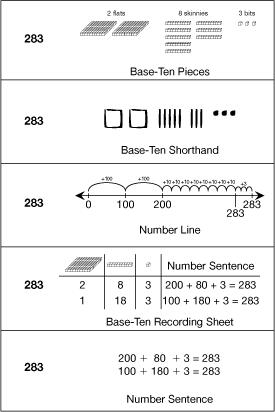Students explore different ways to partition two-digit numbers into tens and ones, representing the numbers with connecting cubes to develop place value concepts and number sense.
Content in this Lesson
- Composing and decomposing numbers using tens and ones in more than one way [E2].
- Showing different partitions of numbers using connecting cubes and number sentences [E3].
- Recognizing that different partitions of a number have the same total
(e.g., 57 = 50 + 7 and 57 = 40 + 17) [E4]. - Connecting base-ten partitions of a number to place value.
Assessment in this Lesson
| Assessment | Expectation Assessed |
|---|---|
|
Pack 'Em Up! |
|


















